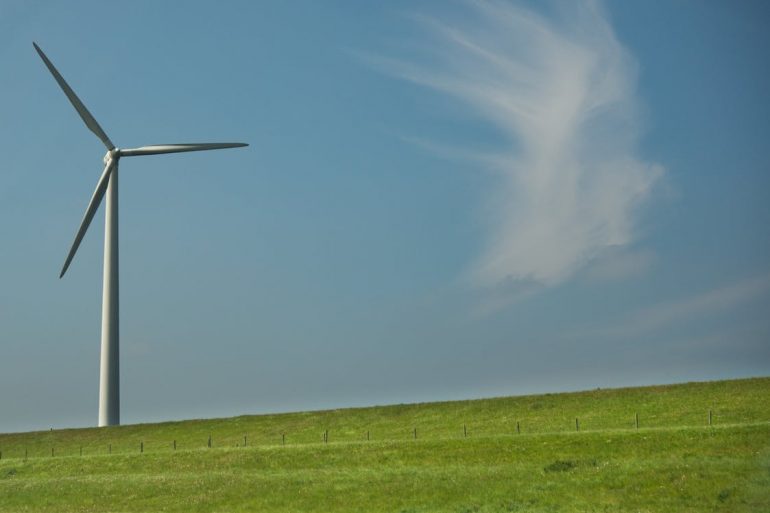
Wind turbines have been using the force of the wind to pump water and grind grain for generations. The earliest wind turbines for generating power were developed in Europe around 1910. The data collected by the vane and anemometer positioned at the top is used to automatically align the wind turbine to take full use of the kinetic energy of the wind. Wind is now a rapidly rising source of electricity due to technological advancements and the need for renewable energy sources. Traditional windmills have evolved into modern wind turbines. A wind farm is a collection of wind turbines located in one location.
The turbine is supported by a steel reinforced concrete foundation, the size of which is determined by the turbine’s size. The foundation is a large structure that ensures the turbine can endure heavy winds. It’s always below ground level and won’t be seen after the project is finished.
Although some turbines have lattice towers, towers are usually made of tubular steel (more like an electricity transmission pylon).
A nacelle is a box that sits on top of each wind turbine. Three propeller-like blades are attached to the nacelle and connect to a rotor. An anemometer for measuring wind speed and direction is also mounted on the nacelle.
The nacelle is rotated to face the wind by the wind direction. The kinetic energy in the wind propels the turbine blades around the rotor (creating mechanical energy).
The primary shaft, which rotates inside the generator, is connected to the rotor. A magnetic rotor spins inside copper wire loops. This causes electrons to move inside the cooper, resulting in the generation of electrical energy (what we call electricity in our daily lives).
The generated electricity is then routed through the tower and into an underground cable via massive cables that run from the nacelle. Wind farms use wires to transport electricity generated by various turbines to a substation. A step-up transformer is used to boost the electrical output once again.
A transmission connection connects the substation’s electricity output to the regional electrical grid, which serves cities all throughout the region.
Cos of the extreme loads that wind turbines are subjected to throughout their lifespan, they are unlikely to last much longer. This is due in part to the turbines’ structure, as the turbine blades and tower are only attached at one end of the construction, exposing them to the full power of the wind.
Naturally, as the wind speed increases, so do the weights placed on turbines. At rated wind speed, this can reach about 100 times the design loads, which is why many turbines are designed to shut down to protect themselves at higher wind speeds.
The environmental operating circumstances that the wind sector faces are one of the key aspects that affect the lifespan of a wind turbine. The cyclic loading of foundations, jacket structures, and monopoles induced by waves is a site-specific condition that includes average wind speeds, turbulence intensities, and the cyclic loading of foundations, jacket structures, and monopoles.
In addition to these environmental considerations, every structure faces the standard problems of fatigue failure due to use over the asset’s lifetime. From wind turbine blades to wiring and hydraulic systems, these encompass a wide range of parts and components.
A turbine’s lifecycle can be extended by regular monitoring and maintenance. This necessitates assessing the asset’s state and comparing it to the turbine’s remaining lifespan, based on predicted loads and fatigue, as well as environmental considerations at the wind energy site.
